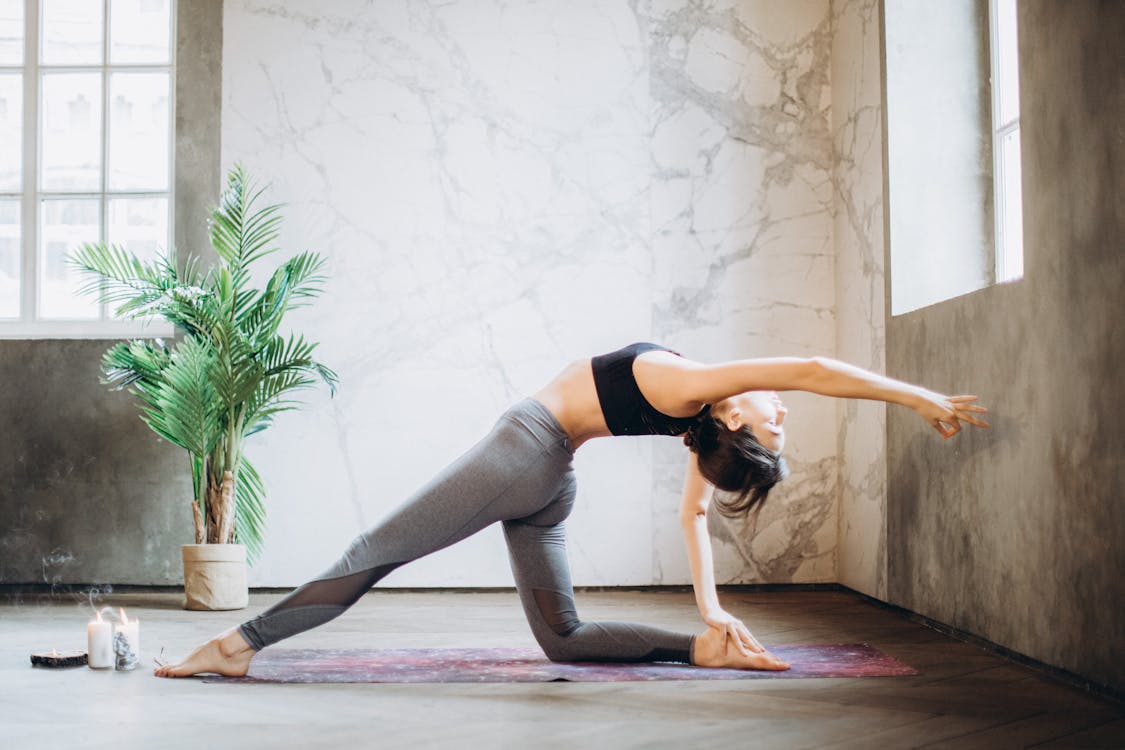Exercises for Improving Flexibility: Enhance Your Range of Motion Naturally

Flexibility plays a crucial role in our overall well-being, allowing us to move freely and perform daily activities with ease. Whether you’re an athlete aiming to prevent injuries or someone looking to enhance your quality of life, incorporating flexibility exercises into your routine can yield numerous benefits. In this article, we’ll explore various exercises tailored to improve flexibility, helping you achieve greater mobility and range of motion.
Understanding Flexibility
Flexibility refers to the ability of our muscles and joints to move through their full range of motion. It’s not just about being able to touch your toes; it’s about having the mobility to perform various movements effortlessly.
Benefits of Flexibility Training
Improving flexibility offers a plethora of benefits, including reduced risk of injuries, enhanced posture, improved athletic performance, and increased blood flow to muscles, aiding in recovery.
Warm-Up Exercises
Before diving into any flexibility routine, it’s crucial to warm up your muscles to prevent injury and prepare them for stretching. Simple activities like jogging in place, arm circles, and leg swings can effectively raise your heart rate and loosen up your muscles.
Dynamic Stretching
Dynamic stretching involves moving your muscles and joints through a full range of motion in a controlled manner. This type of stretching not only improves flexibility but also helps activate the muscles you’ll be using during your workout or activity.
Static Stretching
Static stretching entails holding a stretch for a set period without movement. While it’s often done after a workout, incorporating static stretches into your routine can gradually improve flexibility over time. Remember to breathe deeply and hold each stretch for at least 30 seconds.
Yoga Poses for Flexibility
Yoga is renowned for its ability to enhance flexibility, strength, and mental well-being. Poses like Downward-Facing Dog, Forward Fold, and Pigeon Pose target various muscle groups, promoting flexibility while also calming the mind.
Pilates for Improved Flexibility
Pilates focuses on core strength, stability, and flexibility. Incorporating exercises like the Roll-Up, Spine Twist, and Swan Dive can help increase flexibility while improving overall body awareness and control.
Resistance Training for Flexibility
Contrary to popular belief, resistance training can also contribute to improved flexibility. Exercises like lunges, squats, and shoulder presses through a full range of motion can help lengthen muscles and increase joint mobility.
Foam Rolling Techniques
Foam rolling, or self-myofascial release, is a form of self-massage that targets tight muscles and fascia. By rolling various muscle groups over a foam roller, you can alleviate muscle tension, improve circulation, and enhance flexibility.
Tai Chi and Qi Gong for Flexibility
Tai Chi and Qi Gong are ancient Chinese practices that emphasize slow, deliberate movements and deep breathing. These gentle exercises can improve flexibility, balance, and overall well-being, making them suitable for individuals of all ages and fitness levels.
Incorporating Flexibility into Daily Life
Enhancing flexibility isn’t just about dedicating specific time to stretching; it’s also about incorporating movement into your daily routine. Whether it’s taking the stairs instead of the elevator or practicing desk stretches at work, small changes can make a significant difference.
Common Mistakes to Avoid
When embarking on a flexibility journey, it’s essential to avoid common mistakes like bouncing during stretches, neglecting certain muscle groups, and pushing past your limits too quickly. Remember to listen to your body and progress gradually.
Staying Consistent: Key to Success
Consistency is key when it comes to improving flexibility. Aim to incorporate stretching exercises into your routine at least a few times a week, and be patient with your progress. Over time, you’ll notice significant improvements in your range of motion.
Flexibility and Aging
As we age, maintaining flexibility becomes increasingly important for preserving mobility and independence. By prioritizing flexibility exercises throughout life, you can mitigate the effects of aging and enjoy an active lifestyle well into your golden years.
Conclusion
Incorporating exercises for improving flexibility into your routine can yield numerous benefits, from reducing the risk of injuries to enhancing overall quality of life. Whether you prefer yoga, Pilates, or simple stretching exercises, finding what works for you and staying consistent is key to achieving greater mobility and well-being.
FAQs
1. What are the best exercises for improving flexibility?
Dynamic stretching, yoga, Pilates, and resistance training are all excellent choices for enhancing flexibility.
2. How often should I stretch to improve flexibility?
Aim to stretch at least a few times a week, but listen to your body and adjust based on your individual needs and goals.
3. Can flexibility exercises help with back pain?
Yes, improving flexibility in the muscles surrounding the spine can alleviate back pain and improve posture.
4. Is it normal to feel discomfort during stretching?
Mild discomfort is normal during stretching, but avoid any sharp or intense pain. If you experience pain, ease off the stretch.
5. Can flexibility training benefit athletes?
Absolutely! Enhanced flexibility can improve athletic performance, agility, and reduce the risk of injuries for athletes in various sports.
By incorporating these exercises and practices into your routine, you can gradually enhance your flexibility, mobility, and overall quality of life. Remember to listen to your body, stay consistent, and enjoy the journey towards greater flexibility and well-being.




